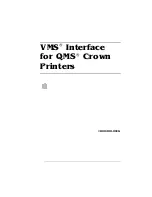
Appendix B. RHN API Access
In an effort to provide customers with added flexibility, RHN makes an application programming
interface (API) available. This interface can be found by clicking Help at the top-right corner of
the RHN website, then clicking API in the left navigation bar. Or you may go directly to:
https://rhn.redhat.com/rpc/api/
. Use this URL for your XMLRPC server and your browser.
The RHN API is based upon XML-RPC, which allows distinct pieces of software on disparate
systems to make remote procedure calls using XML over HTTP. For this reason, any calls you
make are expected to meet the constraints of XML-RPC. You can find out more at
http://www.xmlrpc.com/
.
This section bypasses a list of available methods and classes in favor of tips for using the API
efficiently. These include steps for determining required values and a sample script that makes
some of the calls.
1. Using the auth Class and Getting the Session
It is worth noting that you will almost invariably use the auth class first. This class offers a single
method, login. Use this to establish an RHN session. It requires values for three parameters:
username, password, and duration. The first two come directly from your RHN account, while
the third is the length of time the session should last in seconds, typically 1200. It returns a
session string than can be used in all other methods.
2. Obtaining the system_id
Many of the methods require a value for the
system_id
parameter. This is the unique
alphanumeric value assigned to each system when registered to RHN. It can be found within
the
/etc/sysconfig/rhn/systemid
file on each machine. In addition, you may use the
download_system_id
method within the system class to obtain the value.
3. Determining the sid
Several methods require a value for the
sid
, or server ID, parameter. Note that this is different
from the
system_id
. You may determine the
sid
of a machine in two different ways. First, you
can log into the RHN website, click the name of a system, and view the
sid
at the end of the
URL in the location bar. It follows the "=" symbol and is part of a string that resembles the
following: "index.pxt?sid=1003486534". Second, you may use the
list_user_systems
method
within the system class to obtain a list of systems available to the user that contains the
associated
sid
s.
4. Viewing the cid
Like servers, channels have their own IDs. This value, the
cid
, is a required parameter for
some methods, including
set_base_channel
and
set_child_channels
. Also like the
sid
, the
cid
can be obtained through the RHN website. Just click on the name of a channel and view
219
Summary of Contents for NETWORK SATELLITE 5.1.0 - CHANNEL MANAGEMENT
Page 1: ...Red Hat Network Satellite Reference Guide 5 1 0 5 1 ISBN Publication date ...
Page 2: ...Red Hat Network Satellite ...
Page 4: ...Red Hat Network Satellite ...
Page 12: ...xii ...
Page 22: ...8 ...
Page 35: ...Figure 2 11 Available Package Updates Available Package Updates 21 ...
Page 52: ...38 ...
Page 74: ...Figure 5 15 Text Mode Welcome Screen Chapter 5 Red Hat Network Registration Client 60 ...
Page 176: ...162 ...
Page 202: ...188 ...
Page 220: ...206 ...
Page 300: ...Your Preferences 71 Index 286 ...
















































